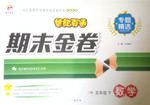题目内容
【题目】阅读下面材料,在空白处填入适当的内容(1个单词)或括号内单词的正确形式。
Have you ever tasted or perhaps heard of sugar painting(糖画)? Sugar painting, as【1】(it) name suggests, is made from melted sugar. Craftsmen often paint animals and flowers on a stone board with the syrup(糖浆).When【2】 sugar cools down, a piece of sugar art is finished. It 【3】(consider) as both sugar and painting.【4】 one symbol of Chinese culture, sugar painting is getting more and more attention and recognition, and【5】 are the artists.
Li Jianzhong, a 38-year-old craftsman, used to be a miner. After the mine closed down, he turned to house decorating, until he was forced to give that up due to a finger【6】(injure). Later, he discovered sugar painting, something he really had an interest in and a strong desire【7】(learn) .Since there was【8】 sugar painting craftsman in his village, he studied by himself through videos and information on the internet and soon【9】 (master) the skill. Li is committed to【10】 (keep) the art alive and hopes it can be passed down in folk.
【答案】
【1】its
【2】the
【3】is considered
【4】As
【5】so
【6】injury
【7】to learn
【8】no
【9】mastered
【10】keeping
【解析】
这是一篇说明文。本文对糖画的制作工艺进行了简单的介绍。与此同时,还介绍了一位38岁的糖画手艺人。他之前做过矿工和家装工人。后来,他无意中发现了糖画,并产生了浓厚的兴趣。通过自学,他掌握了这项技能,并希望能将它传承下去。
【1】
考查代词。修饰后文名词name应用形容词性物主代词,且指代Sugar painting应用its。故填its。
【2】
考查冠词。sugar为名词,此处特指上文提到的melted sugar应用定冠词the。故填the。
【3】
考查动词时态语态。本句中主语与谓语动词构成被动关系,且陈述客观事实用一般现在时,主语为it,故谓语动词用单数形式。故填is considered。
【4】
考查介词。句意:糖画作为中国文化的一种象征,越来越受到人们的重视和认可,艺术家们也越来越重视和认可。表示“作为”应用介词as,句首单词首字母要大写。故填As。
【5】
考查倒装句。句意同上。分析句子结构可知主语“the artist”位于be动词之后,故本句为倒装句结构“so + be + 主语”。并且在倒装句中,“也”的肯定表达方式是so。故填so。
【6】
考查名词。根据上文可知不定冠词a后面要接可数名词单数形式,故填injury。
【7】
考查非谓语动词。句意:后来,他发现了糖画,这是他真正感兴趣和强烈的学习欲望。分析句子结构可知learn在句中应用非谓语动词形式,且desire作名词“欲望”时后可接动词不定式作定语,来修饰前面的名词。a strong desire to learn表示“一股强烈的学习欲望”。故填to learn。
【8】
考查形容词。句意:由于他所在的村子里没有画糖的工匠,他通过网上的视频和信息自学,很快就掌握了这项技艺。结合句意表示“没有”应用形容词no。故填no。
【9】
考查动词时态。结合上文he studied by himself through videos and information on the internet and soon可知连词“and”(并且)表并列,空处和“studied”为并列谓语,故应用一般过去时。故填mastered。
【10】
考查非谓语动词。句意:李致力于让这门艺术永存,并希望它能在民间流传下去。表示“致力于做某事”短语为be committed to doing sth.。故填keeping。

 世纪百通期末金卷系列答案
世纪百通期末金卷系列答案